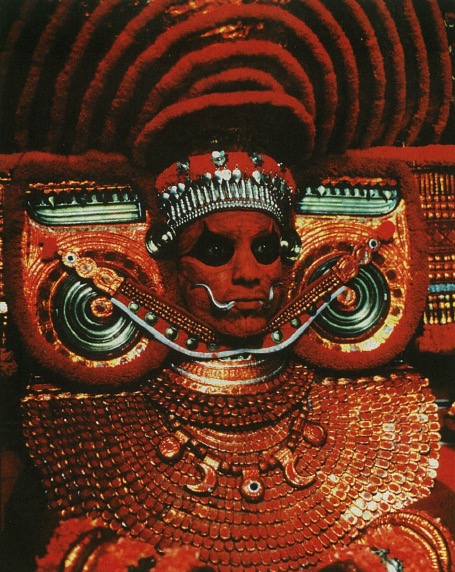Brits indulge in dance, art, song and hot curries
By Vetcha Rajesh, London
When any londoner talks about India,” says director Anne Hunt, “they mention kathak dance, Hindustani music and Mughal paintings. They don’t know anything about South India.” Now a quarter-million Londoners are initiated in the artful magic of kathakali dance, carnatic singing and Tanjore bronzes, the result of a five-week Festival of India’s South in May and June overseen by Hunt.
The event, with venues all across London, offered art and cultural exhibitions, instrumental and vocal musical performances, Indian film screenings, slide lectures, gallery talks and, of course, food. Attendance was high, thanks to superb advance write-ups in the The Times and other major newspapers. The most popular events by far were the free outdoor performances which came alive with the colors and rhythms of the poikkal kudhirai hobby horse dance of Tamil Nadu, music, street theater, craft stalls and storytelling. Everyone was given a hands-on opportunity at garland making and ko–lam, the folk craft of making sacred floor decorations. These were a big hit, attracting large crowds of visitors. The Taj Group of hotels—the major sponsor—flew in three of their choicest South Indian chefs to give the public a ten-day sampling of deliciously varied but little-known Southern cuisines.
“Sacred Lands, Devoted Lives” was a free Horniman Museum exhibition focusing on South Indian village daily life and religious practices, including bathing, cooking, cultivation, prayer, shrines, temples, Hindu Deities, pilgrimages, customs and beliefs. Other exhibits around town ranged from Tanjore paintings and Chola bronzes dating from the 17th to 19th centuries to artwork with ceremonial and workaday artifacts being produced on site by contemporary Indian painters, sculptors and craftsmen.
Ten thousand persons a day gathered at the open-air stage of Co-vent Garden Piazza for dance and music. “Theatre of Gods” at Riverside Studios included Kerala’s traditional theater forms of kathakali along with Karnataka’s dance of the demigods, yakshagana. For the first time the awe-inspiring theyam (“pertaining to the Gods”) was performed in the UK. Spectators sat enthralled by the sole performer’s elaborate makeup in surrealistic colors, 12-foot high headdress and glitteringly onerous 100-pound costume. In India the theyam dancer enters a state of trance, being possessed by the Goddess. He dances in and around the temple, is consulted by village elders and beseeched for cures and prophecies. Only recently was the ritual adapted to stage presentation.
One Londoner observed, “The festival has highlighted for me the backwardness of the materialist West compared to the cultured and spiritual East.” A Jewish Indophile noted, “All the programs I saw brought out the distinct and great element of tolerance in Hinduism.” Some lamented that events offered were too many in too short a time, or that they could not attend those held on weekdays. A few complained that Andhra Pradesh and Karnataka were slighted, given less attention than Tamil Nadu and Kerala.
The festival, proposed in 1991, was organized by World Circuit Arts (a British charity) with the help of Asian Music Circuit, the UK and Indian governments, the Brit-ish Museum, the universities of Cambridge and London and major Indian businesses. As the mela wound down, Ms. Hunt remarked, “The festival was a success in numbers, in prime time media attention and in fulfilling our basic objective of showcasing South Indian culture.” For UK Indian immigrants and hundreds of thousands of Hindus born there, such events promote much-needed pluralism and tolerance.
